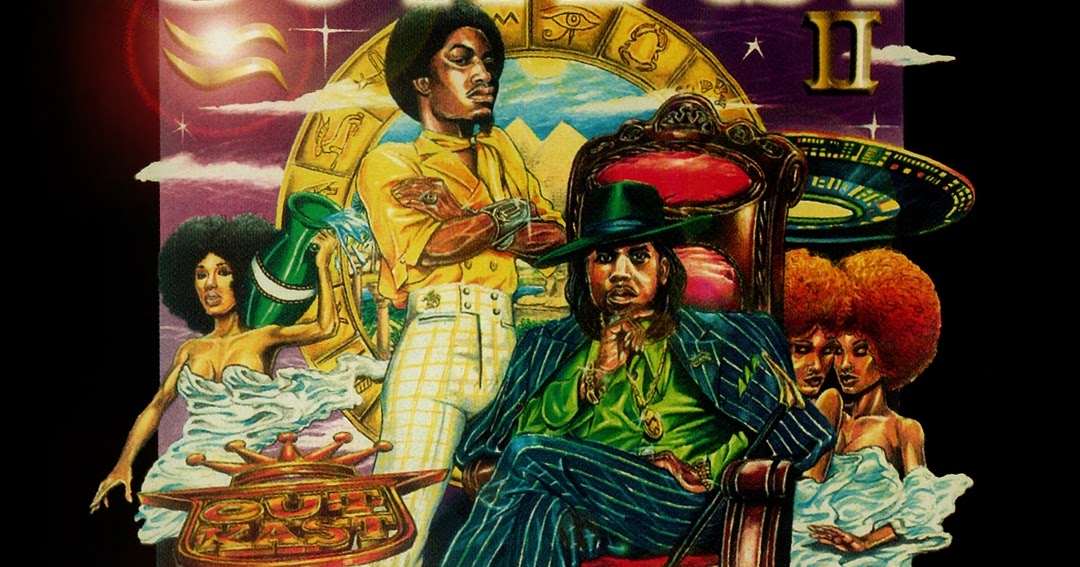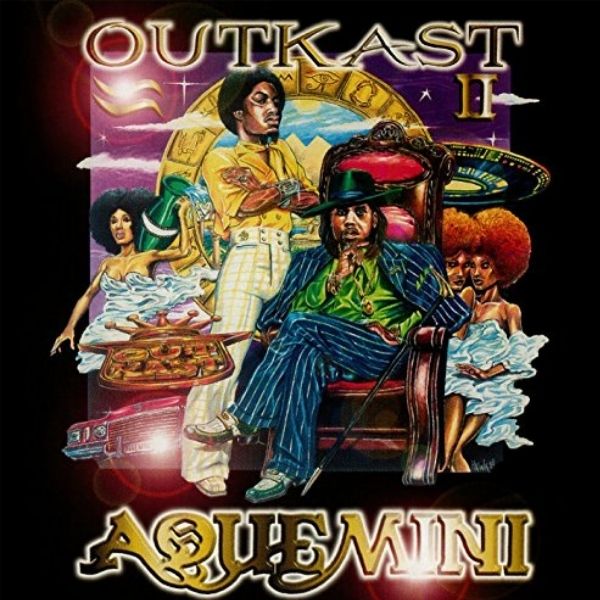

The group employed a large number of live musicians for the album, who had a major influence on the writing development of the album's songs. The commercial success of ATLiens allowed for more creative freedom for the group, which led to OutKast self-producing the majority of the tracks. Released as the follow-up to the duo's 1996 album ATLiens, Aquemini expands on the outer space-inspired compositions by incorporating live instrumentation already introduced by the group's previous release.

It includes guest appearances from Raekwon, Goodie Mob, Masada, Witchdoctor, Buulll!, Backbone, Cool Breeze, Erykah Badu, Sleepy Brown and George Clinton. Production was handled by Organized Noize, Mr. Recording sessions mostly took place at Bobby Brown's Bosstown Recording Studios and Doppler Studios in Atlanta, Georgia from August 1997 to May 1998. The title is a portmanteau of the two group members' Zodiac signs: Aquarius for Big Boi and Gemini for André 3000, which is indicative of the album's recurring theme of the differing personalities of the two members. DJ" SheatsĪquemini is the third studio album by American hip hop duo OutKast, released in Septemby LaFace Records. This was people music, not product music.Southern hip hop, Alternative hip hop, Conscious hip hopīabyface (exec.), Organized Noize, OutKast, David "Mr.

What's more, they didn't spend the whole album telling you that you needed to buy stuff. Like all the best albums, it projected a complete world, one you could take part in just by pressing play. They seemed to be having a great time and the enjoyment seeped out of the record, into my car, and bounced around the windows. Sure, there are samples, but it's mostly real musicians playing guitars and horns, or in the case of the charmingly named South Central Chamber Orchestra, strings and woodwind.Īs well as André and Big Boi, there were guest spots from Sleepy Brown, Cee Lo Green (before he started making annoying records) and one my favourite singers of all time, Erykah Badu, whose Baduizm could easily have taken the spot as my favourite album. The references to 70s funk and soul weren't just in the deep, colour-saturated funk underpinning the whole album: the record sampled Curtis Mayfield and Sly Stone, and George Clinton appeared on the weirdest moment of the record, a raw and woozy track named Synthesizer. OutKast wore their musical connections easily, and sometimes literally.

Or more probably, a massive bounce in its booty. This was groove music with a massive bounce in its step. This wasn't posing music or macho brutalism. It also contains a charmingly skewed description of the boy-meets-girl moment in which the lady in question appears "like a brown stallion horse with skates on". It's a song about falling out of nightclubs, falling in love and stepping up to parenthood, themes that resonated with me. I used to drive around south London, singing along to Rosa Parks and my favourite track on the album, SpottieOttieDopaliscious. Now, strange and brilliant rap could also come from Atlanta, Georgia. It proved that the old push and pull between the east and west coast of American hip-hop was over. I consider it a high point of 90s hip-hop – a period with many rap peaks – bridging from the boom bap of the early part of the decade and providing a new blueprint for rap's next 10 years. A quemini was the album that turned me into a raving OutKast fan, a position consolidated by subsequent albums Stankonia and Speakerboxxx/The Love Below.


 0 kommentar(er)
0 kommentar(er)
